| Zeitschrift Umělec 2001/4 >> Climate, Out of Time, Service Tři výstavy v Budapešti Three exhibitions at Budapest’s Mücsarnok | Übersicht aller Ausgaben | ||||||||||||
|
|||||||||||||
Climate, Out of Time, Service Tři výstavy v Budapešti Three exhibitions at Budapest’s MücsarnokZeitschrift Umělec 2001/401.04.2001 Dora Hegyi | exibition | en cs |
|||||||||||||
|
After a five-month series of salon exhibitions that have given us nothing more than the status quo from the backward, conservative element of the Hungarian art scene, three recent exhibitions at the Műcsarnok (Kunsthalle) in Budapest of more than 50 young Hungarian artists have successfully retorted and are offering a welcome counterpoint.
The Studio of Young Artists Association, which for some years now has been helping young curators to realize exhibition ideas, initiated two of the exhibitions. The Studio has a reputation for going out of its way to hunt down exhibition spaces and help with the financing and organization of events. They essentially enable work to happen by filling in the gaps wherever something is desperately lacking, including interest from the side of the institutions and courage on the part of curators. Nowadays, if one dares speak about artistic climate, as does curator Zsolt Petrányi in the exhibition Climate, the act alone seems to encompass the current atmosphere of self-examination in the artistic field. Of course local background is generally retained, but inherent within this is also the bigger context of the situation of art in general. The last decade saw radical changes in geographical climate under the influence of global threats like the greenhouse effect, and the artistic climate was no less affected by other symptoms of globalization. Ten years after the collapse of communism in the country, a new generation of artists has emerged, a generation that has learned the internationally understood language of art and can not now really be classified as just “Hungarian.” Artists are now using the language of popular culture, fake film posters (Stand Film), trailers for imaginary feature films (Atilla Till) and sound mixes by young DJs (Membran, who put out a CD for the exhibition) as they mirror the phenomena of life in a metropolis. At the same time, painting has not been abandoned and can still be found in these exhibitions, with reference to the long tradition behind it. Painters like András Király, Tibor Iski-Kocsis, Adrián Kupcsik and others work with mediated images and realistic works, executed in various ways but obviously following the trends of contemporary painting. Coming from a different angle, Christoph Tannert from Künstlerhaus Bethanien, Berlin, curated Out of Time, an exhibition which strove to display artistic positions not particularly influenced by the current art climate, positions that have their own time and rhythm and “are not trendy, but will surely have lasting effects.” Nevertheless those selected are in fact experienced artists who have taken on the international art scene and have consequently helped develop its artistic language as they have simultaneously been engraved by present tendencies. Emese Benczúr, one of the seven exhibited artists, puts a positive spin on the title of the exhibition. The preoccupation of how to spend one’s time — often related to the process of creation — is a basic element of Benczúr’s art. For the show she set up little resting corners in the various recesses of the Kunsthalle where foot-sore visitors could plunk down in stuffed sofas. If you happen to look up while resting, you notice an LED display hanging from the ceiling streaming the words “spend time on making time turn by itself”: and for a brief moment the work allows you to step out of time. The third exhibition, Service, curated by Judit Angel, set the task of creating works that specifically address the public, thereby drawing them into a discussion on contemporary art. Communication art in Hungary has a different basis than it has in the Western art scene. Watching the artists attempt to deal with this type of approach was exciting. Examining the exhibition you come to realize that many of the artists interpreted “service” as relating to their position as artists, understandable considering the fact that contemporary art does not exist for the general public in Hungary. The methods they use range from ironic pseudo-service to pragmatic invention. The Venus Studio, for example, is an alternative exhibition guide that actually functions as “astrological help in interpreting works of art” as it describes the creativity of the participating artists based on their horoscopes. In his project, Peter Hecker hires out artists “for any occasion,” effectively tearing down the wall between the activity of the artist and other more work-a-day services. Is it true that people will have a better understanding of art if it is interpreted as another kind of purchasable service? This seems to be a cynical gesture, suggesting that artists define themselves as products, and it comes no closer to answering the question of how to gauge the value of the work, in terms either ideological or financial. Curator and critic Katalin Timár articulates a more apt comment on the position of contemporary art. In her ironic contribution, The Indispensable, she sits at a desk in the exhibition space — in place of artwork — and offers her curatorial work as a service, constructively promoting the position of her profession. Attendometer by Marcell Esterházy, Gábor Kerekes, Krisztián Kristóf and Csaba Szentesi measures the amount of attention visitors pay to certain artworks using cameras, while giving other artists statistical feedback they may find interesting. A few projects, including works by Miklós Erhardt, Andreas Fogarasi, Tibor Várnagy, take leave of the art context altogether in order to discuss themes like globalization, climate change and social problems, with therapeutic intentions and suggestions coming from artist Bea Veszely: She invites visitors for a free horseback ride in order to “learn from the horse about yourself.”
01.04.2001
Empfohlene Artikel
|
|||||||||||||
|
04.02.2020 10:17
Letošní 50. ročník Art Basel přilákal celkem 93 000 návštěvníků a sběratelů z 80 zemí světa. 290 prémiových galerií představilo umělecká díla od počátku 20. století až po současnost. Hlavní sektor přehlídky, tradičně v prvním patře výstavního prostoru, představil 232 předních galerií z celého světa nabízející umění nejvyšší kvality. Veletrh ukázal vzestupný trend prodeje prostřednictvím galerií jak soukromým sbírkám, tak i institucím. Kromě hlavního veletrhu stály za návštěvu i ty přidružené: Volta, Liste a Photo Basel, k tomu doprovodné programy a výstavy v místních institucích, které kvalitou daleko přesahují hranice města tj. Kunsthalle Basel, Kunstmuseum, Tinguely muzeum nebo Fondation Beyeler.
|








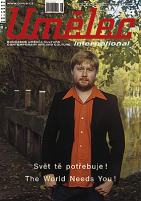



















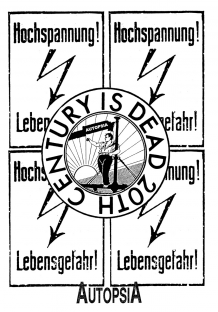





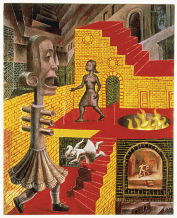
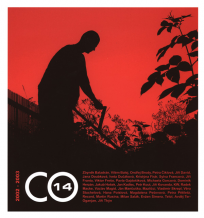
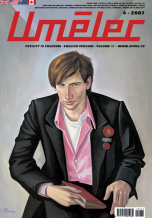


 We Are Rising National Gallery For You! Go to Kyjov by Krásná Lípa no.37.
We Are Rising National Gallery For You! Go to Kyjov by Krásná Lípa no.37.
Kommentar
Der Artikel ist bisher nicht kommentiert wordenNeuen Kommentar einfügen